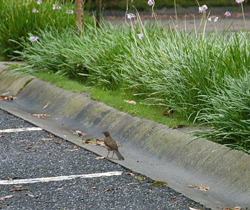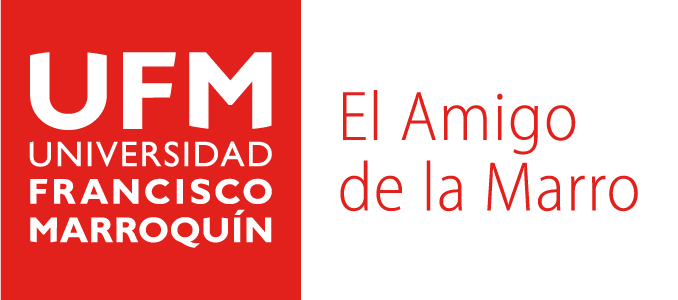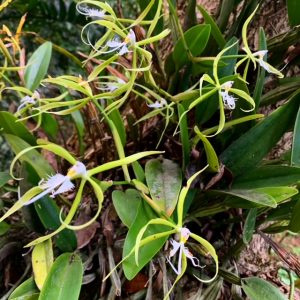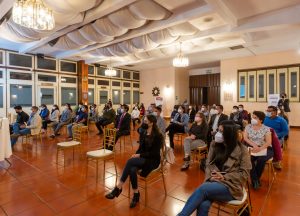 |
| This clay-colored robin wonders around the Ludwig von Mises Library |
Throughout all the day, but mainly near 7 in the morning and 5 in the afternoon, those who circulate around the campus of Universidad Francisco Marroquín enjoy the characteristic songs of clay-colored robins that populate the precipices of Guatemala City.
Clay-colored Robins, also known as clay-colored Thrush, live in shrubs, little thick forests, plantations and gardens. And their scientific name is Turdus grayi.
They are relatively big birds. Their superior parts are of a brownish color, whereas their inferior parts are slightly darker than above. Its neck is paler and noticeable with fine rays of brown color. The bill is greenish-yellow with a dark base and the legs are pinkish or flesh-colored.
The preservation of the forest and its inhabitants has been a priority since the land of the campus was bought by UFM authorities. Proof of that is observed in the architectonic design of the buildings of the university and in the Arboretum.
The UFM campus has the remaining of a Montano forest dominated by Holm oaks. These patches of forest within the city deserve attention and conservation since they play a very important role in the protection of species of flora and fauna that are being threatened by the demographic explosion in the mountainous parts of Guatemala including the metropolis of the central valley.
It is part of UFM´s philosophy, that «in a society of free and responsible people, the conservation of environment is obtained more efficiently when the individuals protect what it means an immediate interest to them. For that reason, the quality of the atmosphere is not a subject of laws and regulations. On the contrary, it is a subject of managing the resources based on property rights and voluntary activity».
When refering about the UFM campus, journalist Juan Luis Font wrote: «Have you seen what the designer of the central garden at the campus of Universidad Francisco Marroquín was able to do in the depression between Vista Hermosa and Ciudad Vieja? It is a work of art.
The Montano forests occupies a small area in the neotropic, and they are important because they lodge a genetic diversity of plants of forest, ornamental, medicinal and eating uses. In addition there are many endemic species in those particular regions.
Every year, in different months, the UFM campus gets full of bird nests, orchids, fungi and other species that attract the attention of those who study and work here.
Recientes
- 1
- 2
- 3
- …
- 1.541
- Siguiente »



